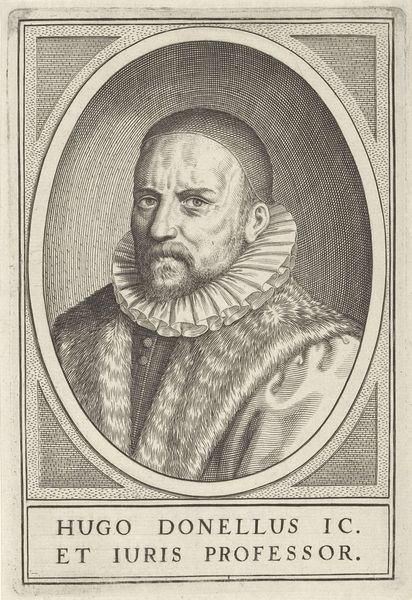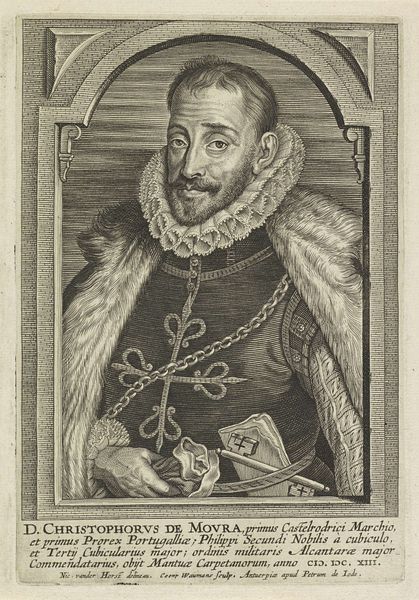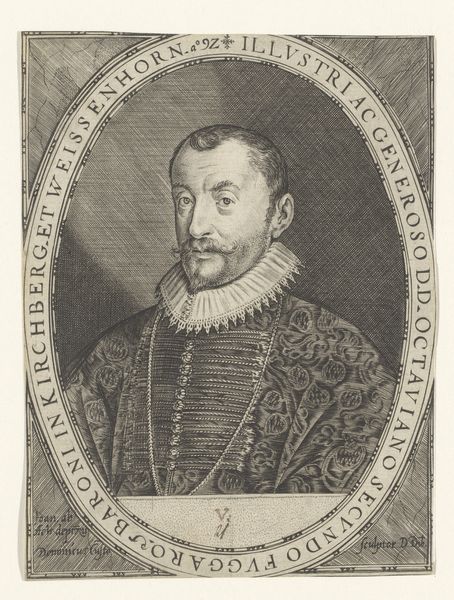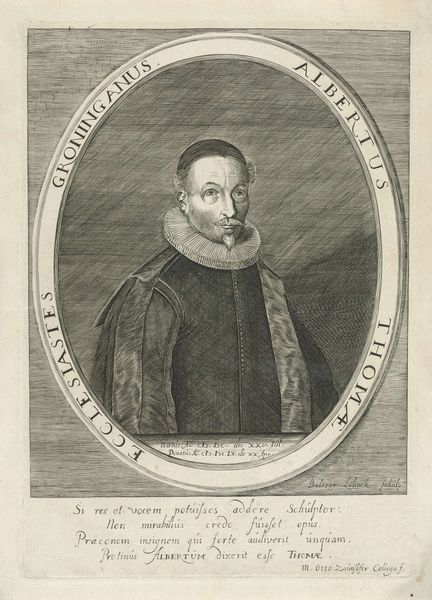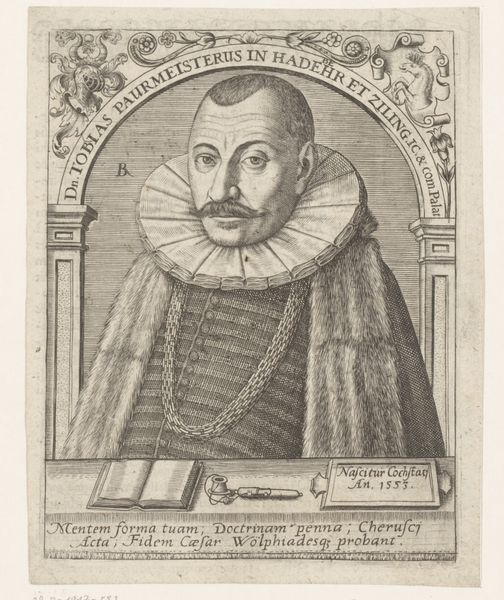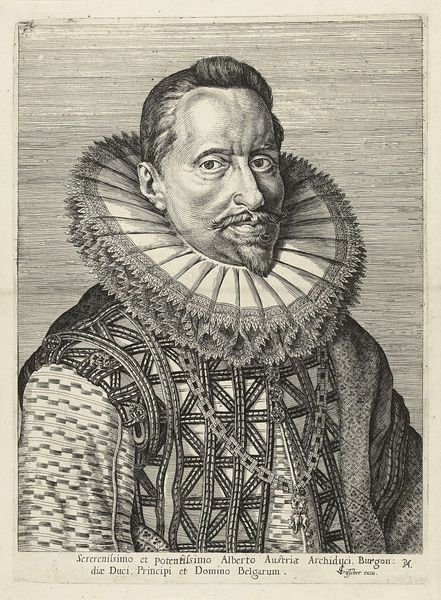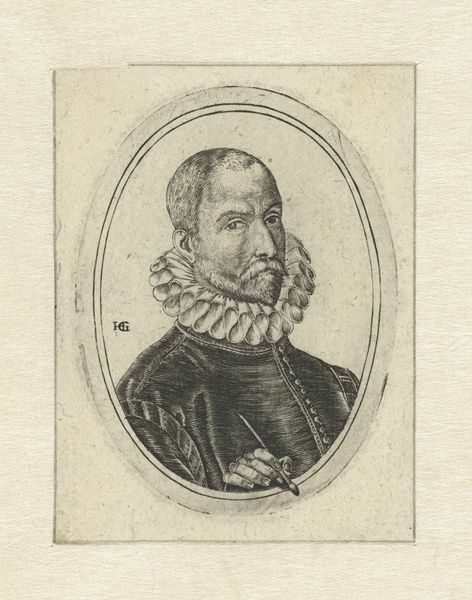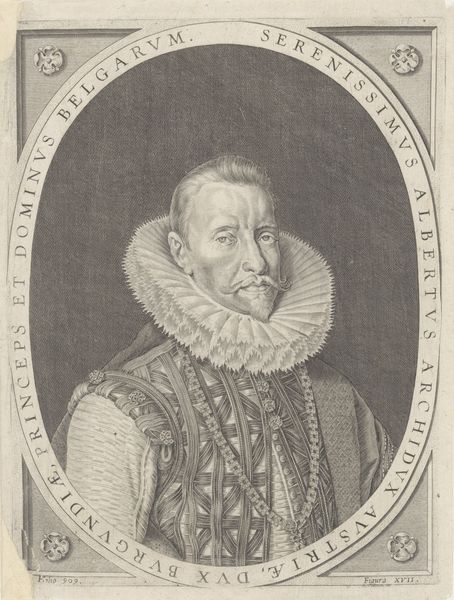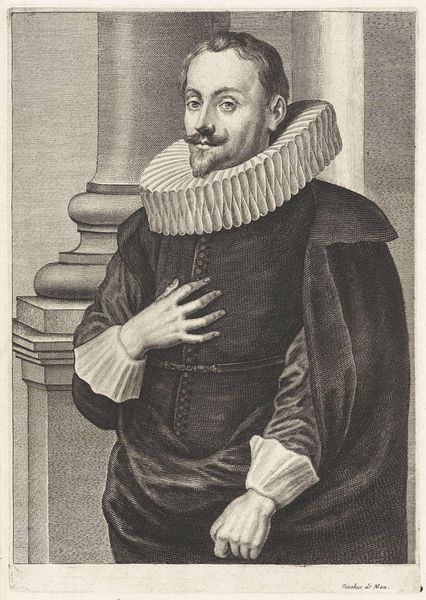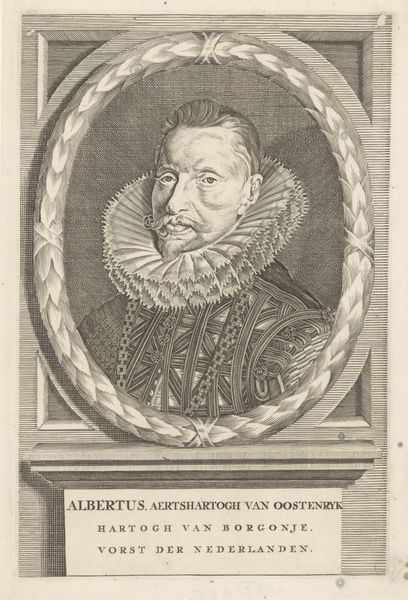
Portret van Sebastian von Bergen op 44-jarige leeftijd 1705 - 1769
0:00
0:00
engraving
#
portrait
#
baroque
#
old engraving style
#
history-painting
#
northern-renaissance
#
engraving
Dimensions: height 162 mm, width 101 mm
Copyright: Rijks Museum: Open Domain
Editor: This engraving, titled "Portret van Sebastian von Bergen op 44-jarige leeftijd", places Sebastian at 44 years of age. It's author is Christian Fritzsch. The material used is engraving and it is dated anywhere between 1705 and 1769. What strikes me most is the sitter's attire and the overall formality. It suggests wealth and status. Curator, what's your read on this portrait? Curator: You're right to focus on the sitter's attire. The ruff, the detailed cloak, even the ring and gloves, all speak to Bergen's status in Hamburg society. The portrait's historical significance lies not just in depicting an individual, but also in reflecting the values and power structures of its time. The question is, how does this image perform its social function? Editor: I suppose it's about conveying authority, but also, is it trying to immortalize him in some way, fitting within established norms of portraiture for the elite? Curator: Precisely! Think about the political context of portraiture at the time. Such images functioned almost like PR, reinforcing existing hierarchies. Note also the conventions the engraver utilizes. Editor: The subject dominates the composition in a static fashion. Would this have been accessible to the common person or restricted to private consumption, for elites only? Curator: While engravings allowed for wider circulation than unique paintings, the target audience was still largely the educated and affluent classes. The ability to interpret the symbolic language of dress and posture would have been a factor too. Consider the act of collecting and displaying prints within specific social networks; it all contributes to understanding the portrait's public role. Editor: So, the image itself becomes a commodity of sorts. A political tool as well as a record of wealth. I had not thought about that function of the work. Curator: Yes! It is interesting to analyze who gets to be represented, by whom, and for what purposes, and how art can therefore function as both reflection of and an instrument for social mobility.
Comments
No comments
Be the first to comment and join the conversation on the ultimate creative platform.
